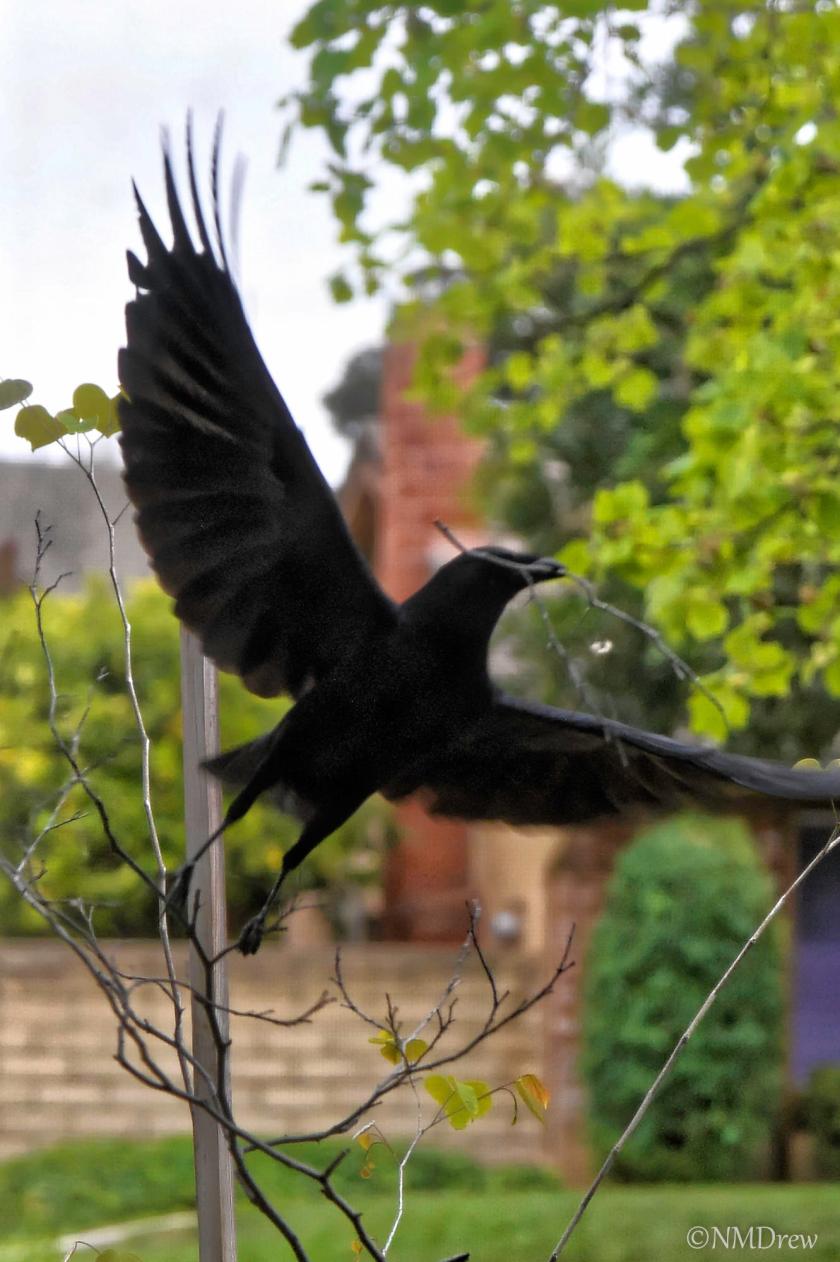Remember the Monty Python skit of a man in a pet shop complaining about the parrot he just bought? I saw it again, and that led to this, and other drawings of our feathered friends.
Here is the rest of the motley crew!
Today I cleaned up this blog a bit, and in doing so created pages for each month of the years I’ve been doing this . . . over four years. In July of this year, I was not in a good mood about photography or what I was doing. My ego was quite into it, in a bad way. Burn out is not a good thing. While rummaging through things, I came across this picture from February 2014. I rather like it, though it is better suited for Halloween than Thanksgiving!

I wish I had grabbed my camera sooner. Too big for the little tree, looking for twigs for his nest, it was quite funny to watch him hopping from branch to unsteady branch, all the while hanging on to the twig he wanted to take! Taken out of my studio window, through the screen.
Yosa Buson
Now that I’ve pulled out my brush and sumi again, I start rummaging through the drawers of the internet. I’m not quite sure how I found Yosa Buson, 1716-1784, but I did; I’d forgotten about him. He was both a poet, and an artist, frequently combining the two. As a painter in ink, his skills are more than evident in the work below.

Both Crows and Hawk show many techniques that allow expression of the elements in sumi-e. Snow is painted by going around the flakes – dark ink makes the white flakes fly. Rain is expressed by using a wide brush, such as a hake, that has been dipped in light / medium ink. The ink is squeezed out by hand or blotted on towelling, and the bristles squished between the fingertips to create an uneven edge. Rain is painted in one long sweep; two or three strokes may be all that is needed. These two paintings are very Japanese in approach to working with sumi.

In Landscape with Solitary Traveler, we have a more Chinese approach to ink painting. The theme and constructs are familiar – mountains, water, a path, a bridge, a pedestrian. As in Western painting, Asian painting has its own history and symbolism. The beauty is that these familiar subjects become personal and unique in the hands of the artist. This painting is done in ink, with only a touch of color added to the traveler.
As I mentioned, Buson also wrote traditional Japanese poetry. Here are some translations of his haiku.
coming back—
so many pathways
through the spring grass
in seasonal rain
along a nameless river
fear too has no name
more than last year
I now feel solitude
this autumn twilight
Before the white chrysanthemum
the scissors hesitate
Besides being a master of wash and line (in word and ink), Buson was quite funny. I came across this painting and could not help but laugh. And here, both painting and poetry mingle, albeit not too politely. Dave Bonta writes about this picture quite well. Understanding the language – and the humor in the translation – may be read about here.
Bonta translates the writing,
gakumon wa ketsu kara nukeru hotaru kana
as
All this study—
it’s coming out your ass, oh firefly!
Perhaps I should stop while I’m ahead . . .